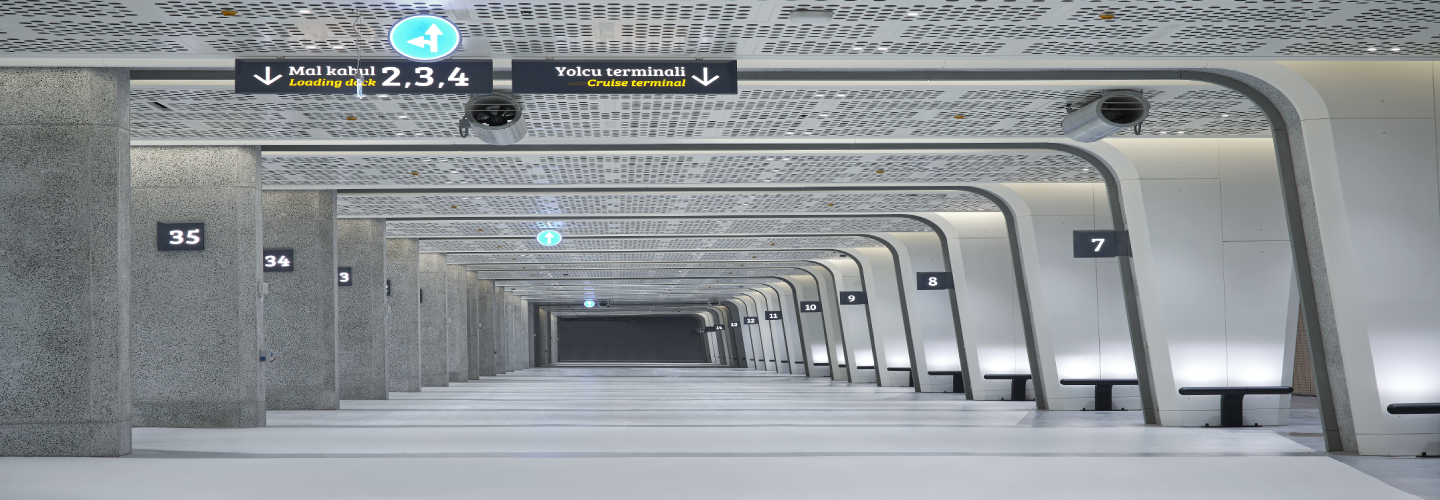Ports need to adapt to changing cruise market
18.06.2019
Dredging and Ports

The cruise market is changing the concept of how we go on holidays, and ports need to adapt to this, argues Figen Ayan, VP cruise operations, Galataport Istanbul When we look at the worldwide figures, 94% of the passengers who go on cruises are extremely satisfied with their experience. At least 82% of passengers say they would go on a cruise holiday again within the next two years. These are very telling figures. Consequently, 111 new cruise ships – including those that are currently under construction – are set to launch by 2027. Cruise ships with a capacity of 5,500 passengers, excluding crew, will go into service. In addition, the concept of holidays has changed over the past few years. They are no longer taken to just relax and see new places, but it is expected to be able to explore the specific nuances of a given region. Cruise ports should therefore invest to be able to adapt to the changing needs of the industry. When we look at the cruise industry in Turkey, as of 2019, we see that cruise line operators have included Turkey along their routes again.
Following this, we think that the revival in the tourism industry, which began last year, will continue through 2019. Turkish ports are constantly improving themselves vis-a-vis the ever-growing cruise industry and relevant infrastructural investments are being made, especially in the case of technological applications. As Galataport, the main port of Istanbul, we continue working with the relevant public authorities as well as international bodies, ship companies, and agencies that we belong to as members, as part of our efforts to bring Istanbul to a stronger position along the Mediterranean. We are extremely happy to have received bookings for 2020 from various cruise companies such as NCL, Holland America Line, Regent Seven Seas Voyager, Oceania Cruises, Viking Cruises, and Le Ponant. Turkey has gained back the confidence of the major cruise companies and the cruise traffic is picking up, coinciding with the opening in March 2020 of our special project’s cruise port. The new terminal is being constructed underground in a project being implemented for the first time in the world. According to this planning, the customs-bonded area is sequestered from the rest of the site with a special 3 m-high rising hatch – a first in the world. All cruise operations will be conducted behind these hatches and all passenger and baggage handling operations will be conducted at the terminal underground.
Bus and taxi operations will take place under the ground in the designated area at the underground parking lot that can host additional 2,300 vehicles. At the same time, other visitors to the Galataport area can continue to benefit from the coastline. The new terminal will be constructed across a 20,000 m2 area, relying on technology and high standards. By adding an adequate number of passport control points to handle many passengers, a port that has the capacity to serve the largest ships of the world, and, which at the same time has the function of the main port. When the cruise port is completed, it can accommodate three ships at the same time and host an average of 15,000 cruise passengers daily. Building connections In general, terminals and logistics connections should provide a unique experience that can be consumed in the best way possible in a limited time frame. Cruise ports, should create a network of experiences, which includes dining, shopping, visual and auditory activities and cultural arts institutions that visitors can access within a limited time period. Planning a concept that enables all of these activities to go together, will certainly bring this perception to a higher level. The port authority should therefore, offer a very distinctive experience to cruise ships and the passengers. Galataport Istanbul offers a great experience, so to say, it is a new destination within a destination.
With Galataport, Istanbul will have an important region where local and foreign tourists and Istanbulites can come together in the natural texture of the region with culture and art centres, a cruise terminal in world standards, an exclusive hotel chain, brands, cafes, restaurants and office areas that appeal to different segments. Galataport Istanbul will also have one of the largest recreational area of the city, crowned by the long hidden beautiful and renovated Tophane Clock Tower dating back to the 19th century. Besides being Istanbul’s first museum square, this area itself will be kept live all year with a special activation planning that will include live performances, exhibitions, fashion shows, festivals and other entertainment events uninterruptedly. We are expecting 1,5 million cruise passengers including the crew and 7 million foreign visitors, annually to Galataport. The annual visitor expectation is around 25 million.